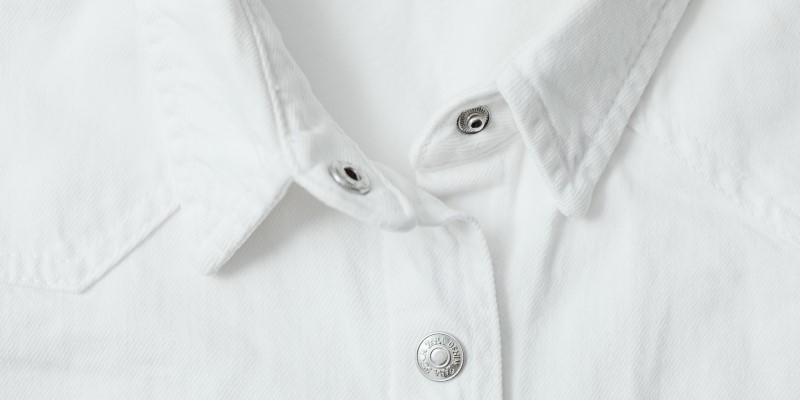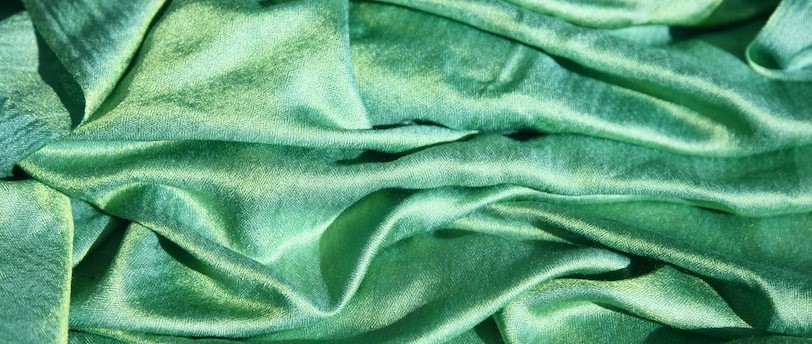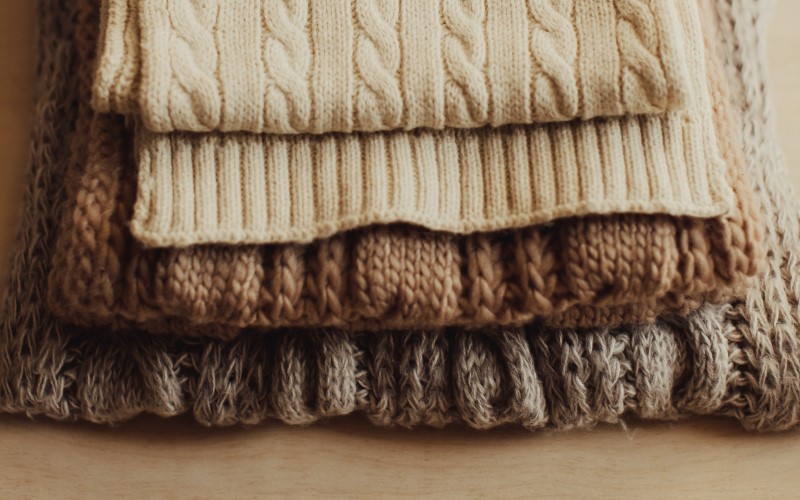Synthetic fabrics leaving you feeling uncomfortable and restricted? It’s time to embrace the beauty and benefits of natural fibres for clothes. From the softness of cotton to the elegance of silk, these plant-based materials offer many advantages that will revolutionize your wardrobe.
This article will explore the natural fibres used in clothes, their unique properties, and their pros and cons. We’ll also highlight why they are the ultimate choice for style-conscious individuals who prioritize comfort, durability, and sustainability.
Key Takeaways
- Wool has exceptional warmth and insulation properties, retaining up to 80% of its insulating properties even when wet.
- Wool wicks moisture away from the body, absorbing sweat or moisture vapour from the skin while still feeling dry.
- Cotton, silk, and hemp offer their benefits in terms of breathability and comfort.
- Hemp is a durable and sustainable alternative to traditional fabrics, requiring minimal water and pesticides for growth.
Table of Contents
Cotton: The Versatile and Sustainable Choice
Cotton is a versatile and sustainable choice for clothing, offering numerous benefits. Amidst a sea of fabric options, like the gentle breeze on a summer day, one cannot deny natural fibre’s allure and versatility. Cotton, in particular, stands as a prime example of a plant-based fibre widely used in clothing production. The pros and cons of cotton make it both an attractive and contentious choice. Overall, cotton remains a popular and widely-used natural fibre in the fashion industry.
The Pros and Cons of Cotton
| COTTON PROS | COTTON CONS |
|---|---|
| Breathable material, comfortable to wear | Absorbs moisture away from the skin |
| Absorbs moisture away from skin | Wrinkles easily, needing more ironing |
| Reduced risk of causing skin issues | Can shrink during washing or drying |
On the positive side, cotton is highly breathable and comfortable to wear. It allows air circulation around the body, making it ideal for hot climates or during physical activities. Additionally, cotton has excellent absorbency properties, effectively wicking away moisture from the skin and keeping you dry. This makes it suitable for linens like towels or bed sheets that need to absorb sweat or water. Cotton is hypoallergenic and does not cause skin irritations or allergies for most people. This makes it an excellent choice for children and the elderly, who are the most likely to be plagued by skin-related issues.

However, there are also some drawbacks to consider regarding cotton. One primary concern is its environmental impact. Cotton cultivation requires significant amounts of water and often involves using pesticides and fertilizers that can harm ecosystems if not appropriately managed. Another issue is that cotton wrinkles easily and may require ironing to maintain a smooth appearance. Lastly, while cotton is durable overall, it can shrink if not adequately cared for during washing or drying.
Cotton offers numerous advantages, such as breathability, comfort, absorbency, and hypoallergenic properties. However, its environmental impact, potential wrinkling issues, and susceptibility to shrinkage should be considered when choosing clothing made from this natural fiber.
Silk: The Luxurious and Timeless Option
When it comes to silk, there are both pros and cons to consider. Next, we’ll take a look at these. Silk offers a beautiful option for clothing but may not be suitable for everyone’s budget or lifestyle.
The Pros and Cons of Silk
Silk, known for its luxurious feel and lustrous appearance, has advantages and disadvantages as a natural fibre used in clothing. One of the main advantages of silk is its incredible softness against the skin. It is smooth and gentle, making it a comfortable choice for those with sensitive skin or allergies. Additionally, silk has excellent temperature-regulating properties. It can keep you warm in cold weather and cool in hot weather, making it versatile for different climates.
Another advantage of silk is its natural breathability. Silk fibres are highly porous, allowing air to circulate freely through the fabric. This helps to prevent sweat and moisture from being trapped against the skin, keeping you dry and comfortable throughout the day. Furthermore, silk is known for its strength and durability. Despite its delicate appearance, silk fibres are actually very strong and resilient. With proper care, silk clothing can last for a long time without losing its shape or becoming worn out.
On the downside, one of the main disadvantages of silk is its high price point compared to other fabrics. The production process of silk involves labour-intensive methods such as hand-picking silkworm cocoons and extracting fine threads from them. This makes silk more expensive than synthetic alternatives or even other natural fibres like cotton or linen.

Another disadvantage of silk is that it requires special care when cleaning. Silks must be hand-washed or dry-cleaned to maintain quality and integrity. They cannot withstand harsh washing machines or high-heat drying cycles without risking damage or shrinkage.
Silk offers many benefits, such as softness, breathability, temperature regulation, and durability. However, the higher cost and care to maintain silk garments might make it less attractive for some. Nonetheless, silk remains an option if you’re looking for elegance and luxury in your clothing choices. With its smooth and lustrous texture, silk adds a touch of sophistication and glamour to any outfit, making you feel like a true fashion connoisseur.
Linen: The Breathable and Eco-Friendly Fiber
Linen, a natural fibre made from the flax plant, has pros and cons. Let’s give you an overview of the pros and cons, so it can help you decide if linen is the right choice for your clothing needs.
The Pros and Cons of Linen
One significant advantage of natural fibre clothing is its breathability, allowing for better air circulation and moisture absorption. Linen, in particular, stands out as an eco-friendly and breathable fibre. Made from the fibres of the flax plant, linen has a unique structure that allows it to absorb moisture while still feeling dry to the touch. This makes it an ideal choice for warm weather or humid climates. When you wear linen clothing, you’ll notice that it feels cool and comfortable against your skin, thanks to its ability to wick away sweat and allow air to flow freely.

In addition to its breathability, linen also has other benefits worth considering. One advantage is its durability. Linen fibres are known for their strength and resilience, making articles of clothing made from linen long-lasting and resistant to wear and tear. Another benefit is that linen is a sustainable fabric choice. Flax plants require minimal water compared to other crops like cotton, and they can be grown without pesticides or synthetic fertilizers. This makes linen a more environmentally friendly option when compared to synthetic fabrics or those made from non-renewable resources like petroleum. While there may be some drawbacks to consider with linen clothing (such as wrinkling easily), its breathability, durability, and sustainability make it a popular choice among those seeking natural fibre options.
Wool: The Warm and Insulating Material
Wool is a warm and insulating material used for centuries in clothing. It is known for its ability to retain heat, making it an excellent choice for winter wear. However, wool can be heavy and bulky, which may not be ideal for those looking for lightweight options. Additionally, some people may find wool to be itchy or irritating on their skin.
The Pros and Cons of Wool
Cotton, silk, and hemp are natural fibres often preferred over wool for their breathability and comfort. However, wool also has its own unique set of advantages and disadvantages. One of the significant benefits of wool is its exceptional warmth and insulation properties. The crimped structure of wool fibres creates tiny air pockets that trap heat, making it an excellent choice for cold-weather garments. Wool can retain up to 80% of its insulating properties even when wet, unlike other fabrics, which tend to lose their warmth when damp.
Another advantage of wool is its ability to wick moisture away from the body. Wool fibres have a high absorbency level, allowing them to absorb sweat or moisture vapour from the skin while still feeling dry to the touch. This makes wool a great option for activewear or outdoor clothing, as it helps regulate body temperature and prevents overheating.

On the downside, one common complaint about wool is its potential for itchiness or irritation on sensitive skin. Some people may find certain types of wool uncomfortable to wear due to the coarseness of the fibres. Wool also requires special care during washing as it can shrink if not handled properly.
While cotton, silk, and hemp offer their own benefits in terms of breathability and comfort, wool stands out with its superior warmth retention and moisture-wicking properties. However, individuals with sensitive skin may need to consider alternative options due to potential discomfort. Overall, understanding these pros and cons can help you make an informed decision when choosing natural fibre clothing suitable for your needs.
Hemp: The Durable and Sustainable Alternative
Hemp is a versatile and sustainable alternative to traditional fabrics, with several advantages and disadvantages. Read on below to help you decide whether it’s suitable for your wardrobe.
The Pros and Cons of Hemp
When considering natural fibres for your clothing, you may want to explore the benefits and drawbacks of using hemp. Hemp is a versatile plant used for centuries in various industries, including textiles. One of the key advantages of hemp is its durability. It is known to be one of the strongest natural fibres, making it ideal for clothing that needs to withstand wear and tear. Hemp fabric is also highly resistant to mould, mildew, and UV rays so it can maintain its quality even after prolonged exposure to sunlight and moisture.
Another benefit of hemp is its sustainability. Unlike other crops used in textile production, such as cotton or polyester, hemp requires significantly less water and pesticides to grow. It can also be cultivated without synthetic fertilizers or genetically modified organisms (GMOs). This makes hemp a more environmentally friendly option compared to other natural fibres. Additionally, because hemp plants have deep roots that help prevent soil erosion and improve soil health, they can be grown on land that may not be suitable for other agricultural purposes.
However, there are also some drawbacks to using hemp in clothing production. One potential concern is its stiffness and rough texture compared to softer fabrics like cotton or silk. Although advancements have been made in processing techniques to make hemp fabric softer over time, it may still feel coarser than other materials initially. Another drawback is the limited colour options of hemp fabric due to its natural beige hue. While dyeing techniques exist to add colour, this additional step can increase production costs.
When considering natural fibres for your clothing choices, exploring the pros and cons of using hemp can provide valuable insights. Its durability and sustainability make it attractive for those seeking long-lasting garments with minimal environmental impact. However, it’s important to consider factors such as comfort preferences and colour variety when deciding if hemp is the right choice for your wardrobe needs. Additionally, it’s worth noting that hemp fabric can have a slightly coarse texture, which may not be suitable for individuals with sensitive skin or those who prioritize a softer feel in their clothing. Moreover, while hemp offers a range of natural hues, the colour variety may be more limited than synthetic or other natural fibres. Therefore, considering these aspects and the environmental benefits can help determine if hemp aligns with your wardrobe’s style and comfort requirements.
Frequently Asked Questions
Q: What are natural fibres, and why are they used for clothing?
A: Natural fibres are materials derived from plants or animals and used to make clothing fabrics. They are popular because they are breathable, comfortable, and have minimal environmental impact.
Q: What are some common types of natural fibres used in clothing?
A: Some common natural fibres used in clothing include cotton, silk, wool, linen, hemp, and jute.
Q: What are the advantages of using natural fibres for clothing?
A: Natural fibres have several advantages, including breathability, durability, and the ability to regulate body temperature. They are also biodegradable and have less environmental impact than synthetic fibres.
Q: Are natural fibres more expensive than synthetic fibres?
A: Natural fibres can be more expensive than synthetic fibres, especially high-quality ones like cashmere or organic cotton. However, there are also affordable options available, such as cotton or linen.
Q: Can natural fibres be woven into different types of fabrics?
A: Yes, natural fibres can be woven into various types of fabrics depending on the desired texture and strength. For example, cotton fibres can be woven into a smooth, lightweight fabric, while wool fibres can be woven into a dense, warm fabric.
Q: What are some disadvantages of using natural fibres for clothing?
A: Natural fibres can wrinkle easily, require special care during washing, and may shrink if not handled properly. They can also be more susceptible to damage from insects or mildew.
Q: Are natural fibres more sustainable than synthetic fibres?
A: Natural fibres are generally considered more sustainable than synthetic fibres because they are renewable and biodegradable. However, the sustainability of fibre also depends on factors such as the farming practices used and the amount of water and chemicals required for processing.
Q: Can natural fibres be used to make different types of clothing?
A: Yes, natural fibres can be used to make a wide range of clothing items, including shirts, dresses, pants, skirts, sweaters, and more.
Q: Are there any natural fibres that are not plant-based?
A: Yes, not all natural fibres are derived from plants. For example, wool is a natural fibre that comes from animals, such as sheep, goats, or alpacas.
Q: Are there any specific care instructions for clothing made from natural fibres?
A: Yes, clothing made from natural fibres may require special care instructions. For example, silk may need to be dry cleaned, while cotton can usually be machine washed. It’s important to check the care label on the garment for specific instructions.
Conclusion
Natural fibres are the go-to choice for clothing due to their numerous benefits. From versatile and sustainable cotton to luxurious and timeless silk, these materials offer fashion enthusiasts a wide range of options. The breathable and eco-friendly linen is perfect for warm weather, while wool provides warmth and insulation during colder months. For those seeking a durable and sustainable alternative, hemp is an excellent option.
By incorporating natural fibre clothing into your wardrobe, you enjoy its inherent qualities and contribute to a more sustainable fashion industry. These fibres are comfortable and environmentally friendly as they are biodegradable and require less water and chemicals during production compared to synthetic materials.
So why settle for anything less? Embrace the beauty of natural fibres and experience the incredible comfort they provide. Make a statement with your style while actively supporting sustainability in the fashion world. With their versatility, durability, breathability, and eco-friendliness, natural fibres truly offer a deeper connection with both nature and fashion. So go ahead, indulge in the luxury of wearing clothes that make you look great and feel good about your choices – because when it comes to fashion, nothing beats the allure of natural fibres!
About the Author

ALEX
Alex is an adventurous guy in his early 30s who embodies a touch of the hippie. Passionate about social and environmental causes, he’s managed to travel the world, from immersing himself in Japanese culture for a year to embarking on a six-month backpacking escapade through Peru. Alex loves to learn and has taken numerous courses in Environmental Science and Conservation.
Alex’s commitment to recycling fuels his mission to repurpose discarded items. As a result, he favours garage sale treasures over department stores. He prefers walking and biking to driving. Alex spreads awareness about organic living through Just Organics, joined by his like-minded friend Charlie.

